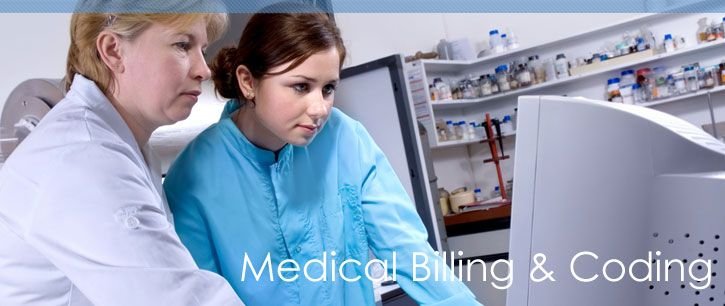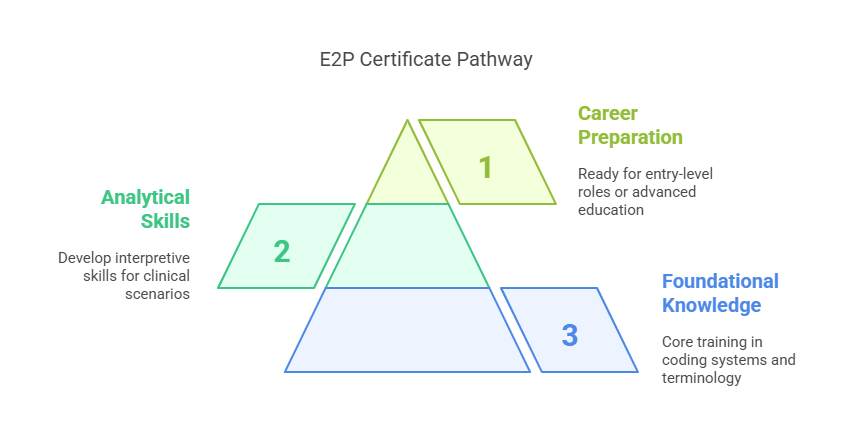Top Steps to Achieve Canada Medical Coding Certification Successfully
Medical coding involves translating healthcare diagnoses, procedures, and services into standardized codes using systems like ICD-10-CA and CCI. These codes are vital for accurate billing, statistical analysis, and maintaining comprehensive health records. In Canada, certified medical coders are integral to ensuring the integrity and efficiency of healthcare documentation.

Certification Pathways in 2025
As the healthcare landscape in Canada continues to evolve, the demand for qualified health information professionals grows stronger. Health information management (HIM) plays a vital role in ensuring that healthcare systems are efficient, accurate, and compliant with national standards. One of the top benefits of enrolling in a medical coding academy is gaining the specialized knowledge and certification needed to thrive in this growing field. The Canadian College of Health Information Management (CCHIM) remains at the forefront of professional certification for individuals pursuing or advancing careers in this field.
In 2025, CCHIM continues to offer clear, structured certification pathways to accommodate different career stages and specialization levels. These pathways include two primary designations—Certified in Health Information Management (CHIM) and Certified Classification and Coding Specialist (CCCS)—as well as the Entry-to-Practice (E2P) Medical Coding Certificate designed for newcomers. When considering how to choose the best medical coding academy for your career, it’s essential to evaluate whether the institution aligns with these established certification routes, ensuring your education supports both your current goals and long-term professional growth. Each pathway serves a unique purpose in supporting the development of health information professionals in Canada.
Certified in Health Information Management (CHIM)
The Certified in Health Information Management (CHIM) designation remains a foundational credential for professionals entering or advancing in the field of health information. It is widely recognized across the Canadian healthcare industry and is often a requirement for employment in many HIM roles.
What Is CHIM?
The CHIM credential validates a candidate's expertise in managing health information across various domains, including data quality, privacy, health informatics, records management, clinical coding, and information governance. Professionals with CHIM certification are equipped to handle complex information management tasks in hospitals, clinics, public health agencies, and health-focused government bodies.
Who Should Pursue CHIM?
This certification is ideal for individuals who:
Are recent graduates of a health information management program accredited by CCHIM.
Are currently working in the healthcare sector and want to formalize or advance their credentials.
Aspire to leadership or managerial roles within HIM departments.
CHIM certification offers not just career credibility but also access to a supportive professional network and continuing education opportunities. Many organizations view the CHIM designation as a mark of commitment to high-quality standards in the field.

Certified Classification and Coding Specialist (CCCS)
While the CHIM designation provides a broad foundation in health information management, the Certified Classification and Coding Specialist (CCCS) credential is tailored for professionals who wish to specialize in classification and coding systems. Coding specialists are essential for accurate clinical documentation, healthcare analytics, insurance processing, and patient care optimization.
What Is CCCS?
The CCCS designation is aimed at experienced professionals who already possess foundational coding knowledge and want to specialize in complex coding scenarios. This may include acute care, outpatient settings, mental health coding, or surgical interventions. The credential confirms advanced skills in interpreting clinical documentation, applying appropriate coding standards (like ICD-10-CA and CCI), and working with specialized classification systems.
Who Should Pursue CCCS?
The CCCS certification is recommended for individuals who:
Have several years of experience working as medical coders or classification professionals.
Wish to gain recognition for their advanced coding skills.
Are looking to work in highly specialized or technical coding roles within large healthcare institutions.
To be eligible for CCCS certification, candidates typically must already hold the CHIM designation or demonstrate equivalent education and professional experience.

Entry-to-Practice (E2P) Medical Coding Certificate
For those new to the field, the Entry-to-Practice (E2P) Medical Coding Certificate offers an excellent starting point. This online, self-paced program introduces students to the fundamental concepts of medical coding and classification systems, preparing them for entry-level roles and further study.
What Is the E2P Certificate?
The E2P certificate is designed to support aspiring health information professionals who may not yet be eligible for CHIM or CCCS certification. It provides core training in coding systems, terminology, data entry, and healthcare documentation practices. It also helps learners develop the necessary analytical and interpretive skills needed to apply coding standards in real-world clinical scenarios.
Key Features:
On-Demand Learning: The E2P program is entirely online and can be completed at the learner’s own pace, making it accessible for working professionals and career changers.
Foundational Knowledge: Students gain a solid understanding of classification systems such as ICD-10-CA, CCI, and SNOMED CT.
Career Preparation: Successful graduates are well-prepared to seek employment in medical coding or pursue more advanced HIM education.
Who Should Enroll?
The E2P certificate is best suited for:
Individuals exploring a new career path in healthcare.
Recent graduates of non-HIM health-related programs.
Internationally educated professionals seeking to enter the Canadian health information workforce.
It acts as a stepping stone for further certification and employment opportunities, especially in administrative, coding, and support roles.

The Importance of Certification in Health Information Management
In today’s data-driven healthcare environment, accurate and standardized health information is more critical than ever. The certifications offered by CCHIM ensure that professionals are adequately trained to manage, analyze, and secure this information. Whether you're aiming to build foundational knowledge, deepen coding expertise, or demonstrate mastery of complex information systems, there is a clear certification pathway tailored to your goals.
Why Get Certified?
Job Market Advantage: Certified professionals have a competitive edge in hiring processes and may qualify for higher salaries.
Professional Credibility: Certifications demonstrate commitment to professional standards and continuous learning.
Workforce Readiness: Employers can be confident that certified individuals meet national standards for health information management and coding.
Continued Education: Certified members have access to ongoing professional development opportunities, conferences, and networking events.
Eligibility and Educational Requirements
To pursue certification, candidates typically need:
A high school diploma or equivalent.
Completion of an accredited Health Information Management (HIM) program.cchim.ca
Relevant work experience in a healthcare setting.
Accredited HIM programs provide comprehensive training in medical terminology, anatomy, coding systems, and healthcare regulations. cchim.ca
Preparing for the Certification Exam
Study Resources
Effective preparation involves utilizing various resources:
Coding Manuals: Familiarize yourself with the latest ICD-10-CA and CCI manuals.Echima
Practice Exams: Engage with practice questions to assess your knowledge and identify areas for improvement.
Online Courses: Enroll in preparatory courses that offer structured learning paths.
Staying Updated
Medical coding standards evolve; thus, staying informed about updates is crucial. For instance, the CCS exam will require 2025 codebooks starting May 1, 2025. AHIMA
Career Opportunities and Job Outlook
Certified medical coders in Canada have diverse career options:
Healthcare Facilities: Hospitals, clinics, and physician offices.
Remote Work: Over 60% of coding positions now offer remote or hybrid work arrangements. Terratern
Specialized Roles: Opportunities in areas like oncology, cardiology, and orthopedics.
Job postings indicate a robust demand, with over 4,000 medical coding specialist positions available nationwide. LinkedIn

Maintaining Certification and Continuing Education
To retain certification, professionals must:
Complete Continuing Education Units (CEUs): Engage in ongoing learning to stay current with coding practices.
Renew Memberships: Maintain active status with certifying bodies like CCHIM.
For example, AAPC requires 36 CEUs every two years to maintain the CPC credential. AAPC
Six Lesser-Known Facts About Medical Coding in Canada
National Coding Standards: Canada utilizes its own coding systems, ICD-10-CA and CCI, differing from the U.S. versions.
Role of Physicians: In some Canadian settings, physicians directly input codes during patient encounters.
Bilingual Coding: Proficiency in both English and French can be advantageous in certain provinces.
Remote Opportunities: The rise in remote coding positions has expanded job accessibility across the country.
Data Quality Emphasis: Canadian coders often focus on data quality and analysis, not just billing.
Public Healthcare System: Coding in Canada supports a publicly funded healthcare system, influencing coding practices and priorities.
Frequently Asked Questions (FAQs)
-
CHIM is a general credential for health information management, while CCCS is specialized for experienced coders handling complex cases.
-
International credentials may be recognized, but completing a Canadian-accredited HIM program is often recommended.
-
Yes, programs like the E2P Medical Coding Certificate offer online, on-demand learning options. Echima
-
The demand is strong, with thousands of positions available and a growing trend toward remote work.
-
Coding standards are reviewed and updated regularly; staying informed through continuing education is essential.
Conclusion
Achieving medical coding certification in Canada from AMBCI requires dedication, education, and continuous learning. With the evolving healthcare landscape, certified coders play a crucial role in maintaining accurate health records and supporting efficient healthcare delivery. By following the outlined steps and staying committed to professional development, aspiring coders can build a successful and fulfilling career in this vital field.
